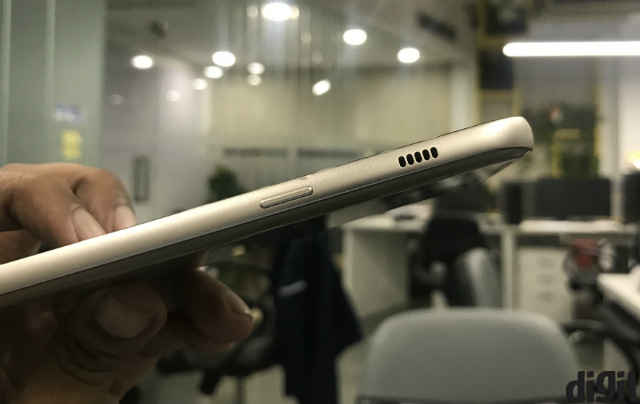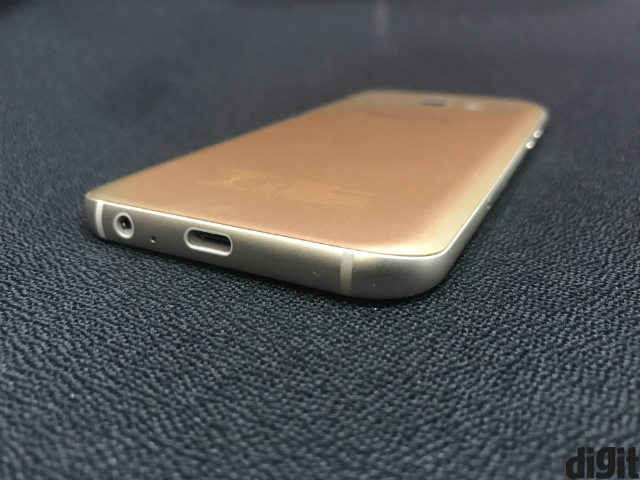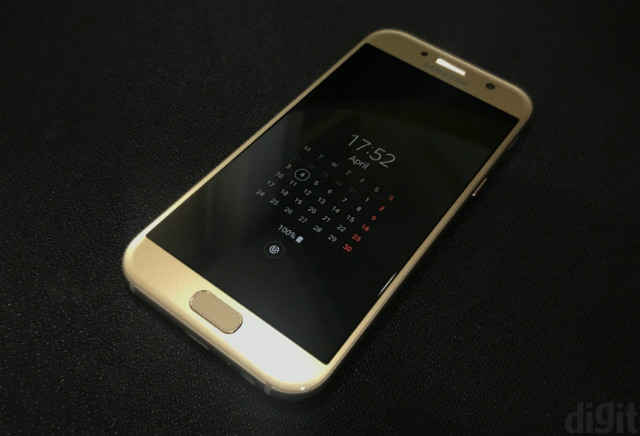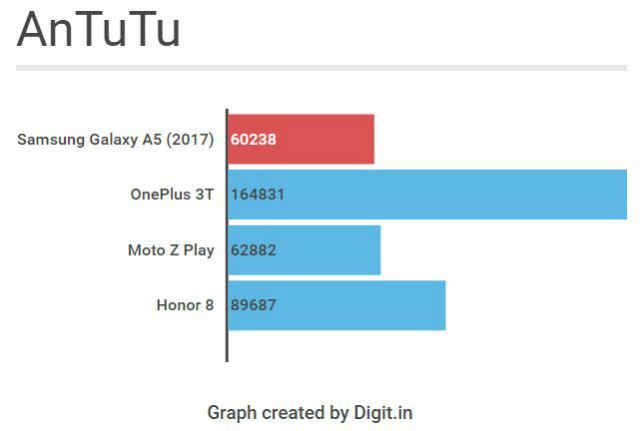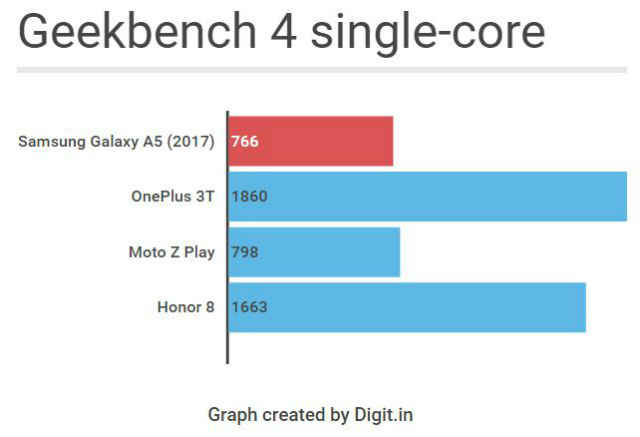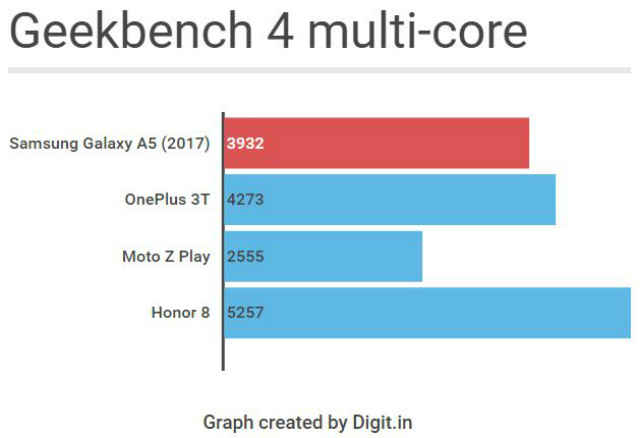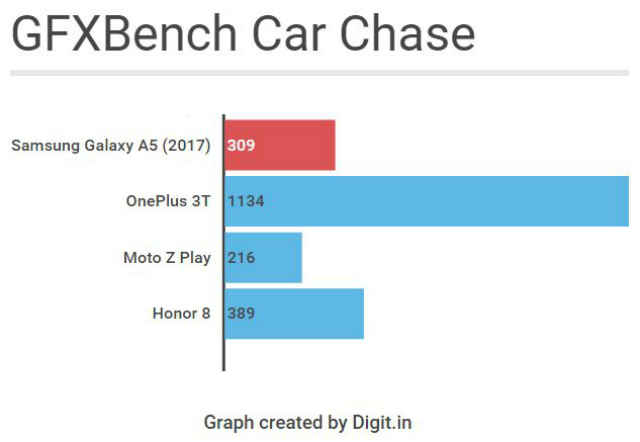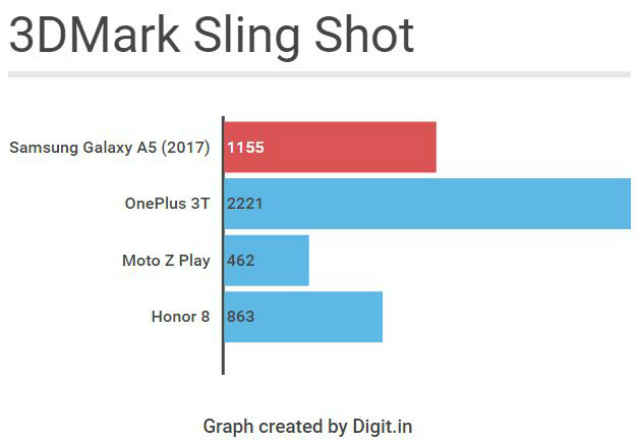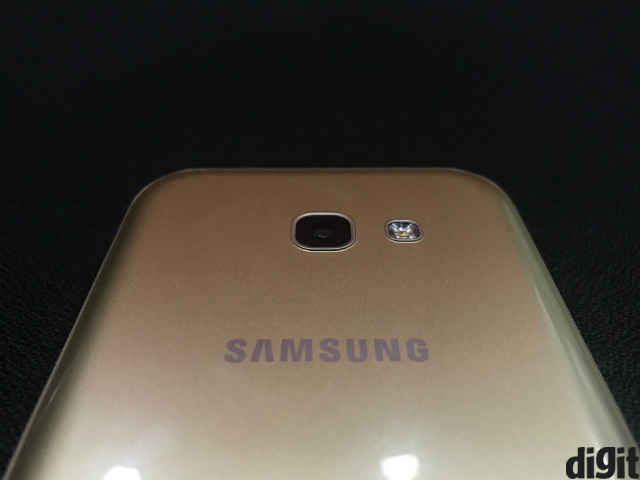Samsung Galaxy A5 (2017) Review : Good user experience marred by occasional flaws
There’s not a single element that can be pointed out as ‘inferior’, in the Samsung Galaxy A5 (2017). The smartphone is built well, looks premium, offers a good display, a neatly organised interface, and a pretty decent camera. The performance is decent for lightweight usage, and barring load times, is usable under heavy load too. Battery stamina paints a similar picture – while it is not really extensive, the Galaxy A5 will still last you through an entire work day.
The OnePlus 3T is the outright better performer at this price, but the Samsung Galaxy A5 (2017) is no pushover. It provides good end-user experience, and is still a worthy purchase for the average smartphone user as long as you are not a hardcore mobile gamer and are thoroughly intolerant of occasional frame drops or occasional load times.
The Samsung Galaxy A5 (2017), hereafter referred to as Galaxy A5, is proof of how big a difference can seamless user interface make to a smartphone. It is also proof that hardware innovation in mid-tier smartphones has hit a ceiling, and until the next wave of innovation brings in an all-dimensional change to mobile hardware, it is software that will play the key role in differentiating devices.
Pricing, Specifications and Competition
Priced at Rs. 28,990, the Galaxy A5 is a direct competitor to the OnePlus 3T – a runaway success that provides flagship specifications for its price. Other devices in its vicinity include the Moto Z Play (Rs. 24,990), Honor 8 (Rs. 26,990) and the Apple iPhone 6 32GB (Rs. 27,999).
The Samsung Galaxy A5 (2017) is powered by an octa-core Exynos 7880 processor coupled with Mali-T830 MP3 GPU, along with 3GB of RAM, 32GB native storage (expandable), a 5.2-inch display with Full HD resolution and Super AMOLED panel, 3000mAh battery, two 16-megapixel cameras (front and rear) with f/1.9 lenses and a USB-C port. It weighs 159 grams, measures 7.9mm in thickness and runs on Android Marshmallow v6.0.1. It also retains the 3.5mm audio port.
Build, Design and Ergonomics
At first sight, the Galaxy A5 looks mighty close to 2016’s Samsung flagship, the Galaxy S7. Samsung has lent the flagship design language down to this premium smartphone to great effect – the Galaxy A5 (2017) looks premium, and once you hold it in hand, it feels equally upmarket.
The metal chassis has a polished rear panel that gradually curves upward along the edges, fusing with the side rim (also metal-crafted) to add rigidity to the smartphone’s frame. The front has glossy Gorilla Glass 4 protection with an oleophobic coating to resist smudges, and the 5.2-inch display is flanked by narrow side bezels, all of which contribute to the device flaunting neat symmetry in design. The physical fingerprint sensor offers good, tactile feedback and also integrates the fingerprint sensor that works as intended. Flanking the button are the capacitive multitask and return buttons that light up on touch, but do not offer vibration feedback, which could have been a good addition here.
The overall design is neat and understated, without any unnecessary or heavy flourish. This makes the Galaxy A5 look quite premium, and the resemblance with the Galaxy S7 is stark. The two volume buttons to the left, and the power button to the right offer tactile feedback while being fairly rigid, which contributes further to making the Galaxy A5 feel like a very well-built device. The dual-SIM tray is at the top, while the 3.5mm audio port and the USB-C port are to the bottom, all of which are neatly spaced out, and there are no noticeable discrepancies about quality of build.
On overall terms, the Samsung Galaxy A5 (2017) feels like a flagship smartphone that is built well, and can easily withstand a few drops without sustaining damage. It excels in design, too, which also synchronises well with the interface to add to the symmetric flow of Samsung’s relatively recent design language. The smartphone flaunts rounded edges and creases – a theme that continues with the design of the app icons as well. You also get a solitary speaker grille to the right, which I find to be the only loose end to Samsung’s efficient, minimalistic design statement.
In terms of ergonomics, the Galaxy A5 is impressive. The rounded edges, with the slightly curved rear panel add to the ease of holding the smartphone, and the 5.2-inch display helps keep the phone fairly compact. The glossy finish does sacrifice a bit on grip, but the phone is not outright slippery.
Display and Interface
The 5.2-inch display is neither too small, nor rather large. For compact smartphone enthusiasts (like me), the Galaxy A5’s display is great for viewing content for long hours, and smartphone users looking for a display size of 5.5 inches or higher should look at the bigger sibling, the Samsung Galaxy A7 (2017).
Coming to the SAMOLED display, colours produced are vibrant and contrast levels are good. The display produces decent blacks, and whites look quite pure. Reds get the preference over shades of blue, but on overall terms, the Full HD display is great to watch videos on. Luminance score of 625 lux proves that the display is actually impressive in terms of brightness, and although the glossy outer glass is a bit reflective, sunlight legibility is quite decent. This, combined with the good contrast levels and taut colours make it a good screen for playing vivid content, and there are no bursts of colour shifts or heavy oversaturation that many AMOLEDs tend to produce.
When in comes to the interface, Samsung has significantly evolved its UI. What you get now is a fairly refined interface that is devoid of needless, pre-installed apps except for Microsoft’s Office applications and the Opera Max Internet browser. The interface gets rounded icons and smoother animations that add to the pleasant overall interface. The rounded design language and seamless animations are in sync with the hardware design, and this contributes to a good overall experience. You also get the app drawer here, and the animations do reasonably well to hide performance shortcomings like app and page load times on the Galaxy A5.
You also get Samsung’s ‘S Bike Mode’ and an Always On display that can be customised to show calendar, date and notification icons. The Always On display is a neat, intuitive addition to the Galaxy A5, and helps in overall usage. The reworked Settings menu has been reorganised, but everything is categorised fairly well, so you would not really be struggling to find the most common settings here.
The only real hiccup about the Galaxy A5’s display is its touch response, which is rather jittery. More often than not, I had to end up tapping at least twice on an app before it would open, and the same goes with page swipes. While we may have passed this as a one-off issue, it was too recurrent and also occurred on the Galaxy A7 (2017), leading us to believe that this might just be a display/performance issue that has till now been left unresolved. It does not occur all the time, but is recurrent enough to raise a little bit of annoyance on what is otherwise a rather good display with a reasonably smooth end-user interface.
Performance
The octa-core Exynos 7880 SoC includes a tri-core Mali-T830 GPU and a Cat.7 LTE-Advanced modem on board, all of which is paired with 3GB of memory and 32GB of storage space. In terms of performance, while there are no real jitters, the Samsung Galaxy A5 (2017) does take longer than optimum to load most applications, and almost everything – from switching between apps to loading videos and typing a text message have split-second delays. This is quite noticeable, although the UI makes a decent attempt of masking these delays with animations.
Despite the split-second delays, most usage is fairly seamless, and the Galaxy A5 allows you to load and switch between up to six everyday apps with relative ease. You can switch between the Chrome browser, Facebook, Messenger, SMS, S Notes and Gmail reasonably seamlessly, although the loading time for each of these apps and the number of unregistered taps on the display tend to increase as you increase the fluency of multitasking.
When it comes to gaming, the Galaxy A5 (2017) does a decent job with heavy and lightweight titles alike. You get nearly constant average frame rates of 29fps, which is decent for most mobile gamers. In-game menus do take some time to load, but the gameplay itself is reasonably decent, and is certainly more than acceptable. However, meticulous users with an eye for detail will spot the sudden jitters and skipped frames while gaming on the Galaxy A5, and although the jitters are not majorly disruptive of the overall gameplay, it does hamper the experience.
When it comes to network performance, the Galaxy A5 retains 4G connectivity steadily, and is as good as you can hope for. There were no unprecedented drops in terms of network stability, for both data and WiFi. Calling works well too, although in a number of instances, my voice did not go through after I made a call. This could have multiple causes, and may have also been because of momentary network drops, and is not recurrent enough to be singled out as a network performance issue.
The integrated speaker in the Galaxy A5 is rather weak, and the solitary grille to the left produces audio in low volume. It is also placed at a rather odd position, and is the only square peg in the overall well-rounded engineering.
Benchmarks
Camera
Both the front and rear cameras of the Samsung Galaxy A5 (2017) use 16-megapixel image sensors with f/1.9 lenses. Talking about the rear camera first, the Galaxy A5 uses an unspecified sensor that produces decent photographs. The rear camera produces good details in photographs along with good colours, albeit with an added touch of vibrancy and contrast. The colours are also oversaturated, leaving you with lesser room for post-processing it. However, colour tones are deep, and dynamic range is quite good.
The overall sharpness of photographs shot by the Galaxy A5 is quite good, and it also does well in terms of finer details. Sharp edges contribute to well-defined details, and the added colour saturation makes photographs really pop. The only loose end here is the Galaxy A5’s inability to efficiently adjust the light in a frame. In photographs with a strong light source and shadow areas, the Galaxy A5 tends to brighten the overall frame to provide ample light to the darker regions, thereby clipping large parts of the highlights. This will lead to clipped backgrounds and bleached details, and alternatively, you get excessively dimmed shadows that tend to lose details as the brighter areas retain definition.
One good element of the Galaxy A5 is that it does not struggle with noise, and the image noise reduction algorithms control grains fairly well. This tends to produce softer photographs in low light, but in exchange for the slightly compromised sharpness, you get cleaner photographs. The trade-off is worth it, as even the softening of details is not really aggressive.
The 16-megapixel front camera is rather impressive, and can take on most selfie-centric smartphones in the market today. The camera produces reasonably decent details, along with appreciable facial textures. Colour tones are close to source, which is also quite good. The beautify mode adds customisable settings that include filters for skin tone, ‘slim face’ and ‘large eyes’. You can quite literally make your face look more chiseled to impress others on the Internet, and even get larger eyes, if that is your thing. Adjusting skin tones removes blemishes to varying extent, along with removing skin textures. Many do prefer this, and each of these modes work as intended.
The camera app itself suffers from the touch response issue that the rest of the Galaxy A5 does too. Focusing is slower than many other smartphones in comparison, which can lead to blurry photographs if you are shooting a fast-moving object. The Galaxy A5 can only record Full HD videos capped at 30fps, wherein other similar smartphones can record in Ultra HD. The overall video quality is still quite decent, but video bloggers and enthusiasts may find this slightly restrictive.
More camera samples
Standard Mode in front camera, without filters
Front camera, with all filters
Battery life
The Samsung Galaxy A5 (2017) is powered by a 3000mAh battery that does get the job done, but does not offer extensive battery stamina. PCMark battery scores relay 6 hours 36 minutes of battery life, which translates to a little more than 13 hours of usage time. Our typical usage covered an hour and 30 minutes of calling, cumulative social media and internet browsing time of over three hours, an hour and 30 minutes of music playback, 45 minutes of GPS-enabled navigation, an hour of video streaming via YouTube and 30 minutes of gaming, apart from the standard array of SMS messaging and emails. This is not very intensive usage per se, and reflects the average duration of usage that most will put their phones through.
Essentially, if you start the day at 9am with 100% charge, you will almost certainly need to plug it in charge by 10pm at the end of the day, unless you mostly make calls and view/browse messages and emails, in which case the Galaxy A5 lasts for a little more than 18 hours. Hence, while the Galaxy A5 will cover your entire day’s usage, you will need to charge it at the end of the day.
Bottomline
There’s not a single element that can be pointed out as ‘inferior’, in the Samsung Galaxy A5 (2017). The smartphone is built well, looks premium, offers a good display, a neatly organised interface, and a pretty decent camera. The performance is decent for lightweight usage, and barring load times, is usable under heavy load too. Battery stamina paints a similar picture – while it is not really extensive, the Galaxy A5 will still last you through an entire work day.
The OnePlus 3T is the outright better performer at this price, but the Samsung Galaxy A5 (2017) is no pushover. It provides good end-user experience, and is still a worthy purchase for the average smartphone user as long as you are not a hardcore mobile gamer and are thoroughly intolerant of occasional frame drops or occasional load times.



